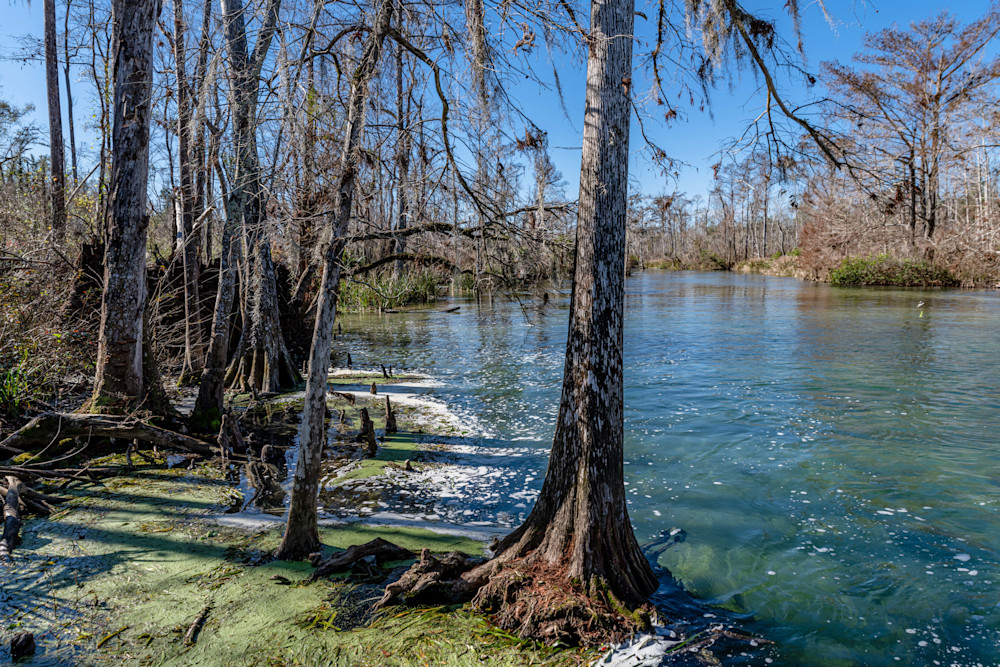The Suwannee River, winding its way through Florida and southern Georgia, is a majestic watercourse surrounded by natural beauty. As it flows, it creates a network of tributaries, springs, and scenic landscapes. Here's a description of the natural waterways along the Suwannee River:
**1. Suwannee River:**
- The Suwannee River itself is a slow-moving, meandering waterway that begins in the Okefenokee Swamp in Georgia and travels southwest, eventually emptying into the Gulf of Mexico in Florida. The river is characterized by its tea-colored waters, cypress-lined banks, and diverse ecosystems.
**2. Springs:**
- Numerous freshwater springs feed into the Suwannee River and its tributaries. These springs contribute clear, cool water, creating havens for aquatic life and providing opportunities for refreshing dips. Iconic springs like Fanning Springs, Manatee Springs, and others dot the river's course.
**3. Tributaries:**
- The Suwannee is joined by several tributaries, such as the Santa Fe River, Ichetucknee River, and Withlacoochee River. Each tributary brings its unique character, adding to the diversity of landscapes along the Suwannee.
**4. Cypress Swamps:**
- Cypress swamps fringe the riverbanks, their majestic trees draped in Spanish moss. These swamps create a serene and picturesque environment, with the towering cypress trees reflected in the calm waters.
**5. Karst Topography:**
- The Suwannee River basin features karst topography, characterized by limestone formations, sinkholes, and underground caves. This geological feature contributes to the formation of the many springs that feed into the river.
**6. Wildlife:**
- The Suwannee River and its surroundings are home to diverse wildlife. Alligators bask on the riverbanks, turtles sun themselves on logs, and a variety of bird species, including herons and egrets, can be spotted along the water's edge.
**7. Sandbars and Islands:**
- Sandbars and small islands emerge in the river, offering scenic spots for picnics, camping, and wildlife observation. These natural formations enhance the recreational appeal of the Suwannee River.
**8. Riverine Forests:**
- Lush riverine forests line the banks, featuring hardwoods, pines, and an assortment of vegetation. These forests provide habitat for various flora and fauna, contributing to the overall biodiversity of the region.
**9. Recreational Opportunities:**
- The Suwannee River and its waterways offer a range of recreational activities, including kayaking, canoeing, fishing, and camping. The slow pace of the river and the pristine surroundings make it an ideal destination for nature enthusiasts.
**10. Conservation:**
- Efforts are made to conserve the natural ecosystems along the Suwannee River. Conservation initiatives aim to protect water quality, preserve habitats, and maintain the overall health of this ecologically significant river system.
Exploring the natural waterways along the Suwannee River is a journey into the heart of Florida's unspoiled wilderness, where the river's gentle flow unveils a tapestry of natural wonders.
















